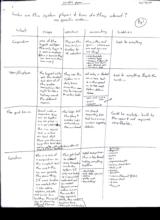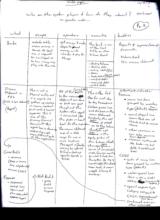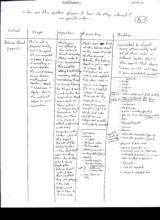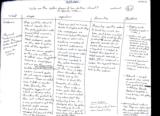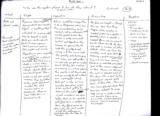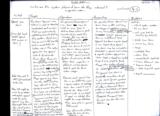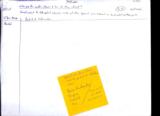|
Basic Assignments
|
Options & Settings
|
Main Time Information
|
||||||||||||||||||||||
|
|
|
|
|
||||||||||||
|
Photo/Image Count: 12
|
||||||||||||
|
|
||||||||||||
|
|
|
Notes:
|
|
Who are the players and how do they interact? No specific order… Corporation: - Scope: One of the biggest entities. The only bigger is a user or employee (this is because they can have more than one corp). - Operations: they are the box, bowl, or sandbox for all activities - Accounting: this is the end goal… where are we and how are we doing? o Corp start date o Inventory types o Number of decimals o Special line items o P&L physical year o Ice-down date - Buddies: tied to everything User/Employee: - Scope: the biggest entity yet the smallest and does all of the smaller transactions. This might be like a hallway around the different rooms. - Operations: they use the system on a daily basis, more than one may be required for certain tasks - Accounting: all entry is started on a base level. It is then passed on to the next station, state, or status. o Year-end W-2 and 1099 o Payroll o Expenses o Reimbursements - Buddies: tied to everything, they do the work… Flex grid tie-ins: - Scope: second under a corporation. They can tie together any sub piece in a 1-many relationship. This is a second level or virtual air level that flows over the main corp. This level does not compete with underlying data. It helps tie thing together. - Operations: this helps tell the story and creates links and relations, user-maintained - Accounting: no direct accounting ties but has or may contain supporting details - Buddies: could be anybody – built by the users and not required, very flexible Locations: - Scope: this is a sub of a corporation. On the simplest level the corp and the loc are generally the same thing. If more locations are needed, this is like adding additions, sub sets, and wings to a building. This could also be shown by different floors or levels. - Operations: this gets ties to almost every transaction inside the system. If only one location, it is somewhat redundant and un-needed. However, as soon as there is more than one, this helps separate and tell the story. Certain locations have certain jobs and functions. - Accounting: used everywhere. This is like thread holding everything together. o Start date o End date (not yet) o Status o Petty cash o Tax settings - Buddies: Tied to: o Deposits o Invoices o Quotes o PO’s o Expense/receipts o Balance sheet items o Stock units o Taxes o Floorplan o Income statement (P&L) o Balance sheet o Time o Flex grid Banks: - Scope: outside entity where money is stored, at least one is required. No limit (infinite) as to how many may play into the mix. - Operations: get money and make deposits, need money, write checks and pay for things - Accounting: the bank is one of the first entity on the balance sheet o Starting balance o Starting date o Ending date (not yet) o Status o Book dates (deposit and expense dates) o Verified dates o Reconciled dates o Posted dates - Buddies: o Deposits and expense/receipt payments o Balance sheet o P&L income statement Income Statement or P&L (Profit and Loss Statement) – Report - Scope: This is not a physical entity and is a report. It gathers up revenue or income, costs of goods sold, and business expenses. This is one of the primary financial documents. This report has a dynamic relationship with many different parts of the application. - Operations: All of the reports (giving of data) to the income statement that are done as tools are used throughout the system. This report is somewhat like the pulse or heart beat for the corporation. The income statement looks at a date range for one or more location. This report is flexible and may be altered to find or look-up specific trends or totals. - Accounting: This is the first stop for most day to day transactions. Certain pieces live and die here on the income statement. Eventually, the net profit is passed on the balance sheet report as net profit in the equity portion of the balance sheet. This report (P&L) runs a series of complicated math formulas according to what it finds from the system. By saying complicated, this doesn’t mean hard, it means in depth filtering and searching. - Buddies: Different parts of the P&L: o Revenue: • Invoice line items grouped by inventory type (default) item sale prices • Normal deposit line items that are not already tied to invoices above • Other revenue or non-sales revenue from deposits • Revenue adjustments like trade-ins, bad debt, and credit card fees o COGS: • Costs of invoice line items grouped by inventory types (default) • Certain special line items with a COGS setting (corp-wide setting) • Special expense type category assigned to COGS. Expense/receipt line items. o Gross Profit: • Revenue (plus or minus any adjustments) minus COGS o Expenses: • Expense/receipt line items and the associated expense types o Net Profit: • Gross profit minus • Expenses Balance Sheet (report): - Scope: This is not a physical entity and is a report. It is a snapshot in time and shows if everything is accounted for. The word balance comes from a mathematical equation. Assets = Liabilities and Equity. This is the catch all report for your corporation. - Operations: Most users are affecting the balance sheet everyday they make and run transactions. This could be adding and subtracting inventory, selling and stocking things in, buying and paying for things, and even working for the corporation. Most users don’t see their actions as balance sheet transactions but they are. There is a cause and effect relationship with every transaction in the system. One of the biggest pieces of the adilas system is the fact that users are doing their day to day jobs and slowly feeding the balance sheet without even knowing that they are playing a key role. Enter once and let it flow if it is correct. - Accounting: Most users think of the balance sheet as the accounting side of the business. Actually, the balance sheet is just a report of where the transactions are and what is still needed to fully show what is, has, or will happen. It is a snapshot in time of where things are at. The accountant or accounting persons use this report to check and make sure things are categorized correctly and properly recorded. o Grouping o Name o In date o Declared value o Starting date o Starting amount o Ending date (not yet) o Status o Mathematical function to use: • Assigned value • Difference • Running total o Line items or subs - Buddies: connected to almost every other entity and all of their subs or different levels. This is the report that shows “Where am I?” and “Have I been recorded and counted?” Tied to: o Corps o Users o Locations o Bank o Income statement (net profit) – (other report) o User-maintained B.S. items o System-maintained B.S. items – (virtual container) o Vendors o Customers o Stock/units o General inventory (parts) o Special line items (unlimited parts) o PO’s o Expense/Receipts o Invoices o Deposits o Accounts receivables (a/r’s) – byproducts of payments made and still owed o Accounts payables (a/p’s) – byproducts of payments made and still owed o Payroll and time cards o Accrual accounts or accrued monies that are collected and passed on or are due to the corporation o Floorplans o Check requests o Taxes and collected fees User-maintained balance sheet items: - Scope: These entities only exist on the balance sheet. They are used as place holders for things that need additional information or are not automatically recorded by normal system usage. They can be set up with names, numbers, grouping, descriptions, mathematical functions, sub entries and/or transactions. They are capable of being placed on either of the three balance sheet categories (assets, liabilities, or equity). Often these items have a special or less frequent time associated with them. This could be weekly, monthly, quarterly, annually, or at random (as needed) intervals. - Operations: These are special holding spots for special actions that are taken. These items are not changed behind the scenes and require a physical action or transaction to take place. Thus the name user-maintained balance sheet items. Quite often these items have admin permissions and deal with potentially longer time periods (as compared with normal day to day activities). - Accounting: The accounting side of these items is the manual portion of the cause and effect relationship. Currently this other half of the cause and effect relationship is not fully automated. However, where we are taking it will help automate the other side of the equation. Our proposal will include e/r and deposit type watchers, system feeds, and possible standalone declarations of values and times. Currently there is a known disconnect between the cause and effect relationship. - Buddies: Most common buddies include deposits and expense/receipts. However, they may also hold hands with invoices, PO’s, other user-maintained balance sheet items, and standalone entries or declarations. Specific, yet flexible in nature. Vendor/Payees: - Scope: These could be internal or external entities. Vendor/payees are the "who" do we owe or who did we buy from? They could be individuals and/or businesses. They mostly deal with either getting inventory from them or paying them money. - Operations: All PO’s and expense/receipts must have at least one vendor. Specific stock numbers and general inventory items (parts) also have a vendor of sorts. The vendor/payee is somewhat behind the scenes but still plays an active role in looking things up in the system. Vendor/payees create associations (relationships) with other parts of the puzzle. - Accounting: One of the main functions of a vendor/payee is who do we owe for what? It is really important if payment is not made in full at the time the transaction happens. If the payment doesn’t match the total due a byproduct is created and tracked. This is called an accounts payable or A/P’s. Vendors/payees are used on checks and other forms of payment. The payment byproduct is tracked on the balance sheet as a liability (we owe someone for a product or a service). Vendors/payees are also useful when checking histories and seeing how much money went to them over time. - Buddies: Tied to: o PO’s o Parts o Invoice –tied but not shown o Quotes – tied but not shown o Expense/receipts o Check request o Payroll and time cards o Stock/units (loose tie) o Account payable (a/p’s) o Reimbursements o Recipe/builds (ingredients) o Floorplan o Time o Flex grid Customers: The word “customer” is editable inside of the system to whatever you may need. (Corp-wide setting) - Scope: These could be internal and external. Usually this is the party (individual and/or business) that receives a product and/or service. Most customers reside on the sales and quoting side of the equation. There are some exceptions to this rule and they come in to effect when they (customers) become a vendor/payee and we pay them money. Unlike a PO and expense/receipt that requires a vendor/payee, certain invoices and quotes do not require a specific customer. These are called cash tickets or counter sales. Basically, the transaction happens and is of a fast or temporary nature. This allows the products to flow out without associating who purchased or got the products and/or services. This kind of a transaction assumes full payment at the time of the transaction. - Operations: These are used on invoices, quotes, and shopping carts. They, like vendor/payees are somewhat behind the scenes but play an active role in transferring ownership of a product and/or service. Customers create an association of what was give and/or purchased. Customers are very important if the entire transaction is pending or incomplete at the time it takes place. This allows the users to look up the customer and finish the transaction at a future time. There is also an entire section that allows a user to record contacts and log entries about the relationship and how it is developing. This log portion has nothing to do with using customers as part of accounting. It is there to help tell the story. - Accounting: Accounting uses the customer to track how much has been paid and how much (if any) is still owed for the product and/or service. If the payments received do not match the amount owed, a byproduct is created and tracked. This byproduct is called accounts receivable or A/R’s. If an overpayment is created. The byproduct becomes a credit or amount owed back to the customer. - Buddies: o Shopping carts (creating a quote or a sale) o Quotes – are just declarations of projected costs and prices for a particular product and/or service. These quotes do not affect inventory and are non-committal back to the customer. o Invoices and transitional invoices. These are committal back to the customer. o Statements – are just reports to show activity on accounts and money both paid and still outstanding. Basically dead end snapshots in time to help with getting funds due. o User-maintained customer logs. These are notes about the customer relationship and may include follow-up actions and date. o Time and elements of time o Time-based billing Stock/Units – Serialized inventory items: - Scope: These are your bigger ticket items and are usually inventory items that are tracked by themselves (on a one by one basis). These are generally serialized inventory items and may have a need to carry additional baggage (outside repairs, internal tickets, adjustments, shopping and miscellaneous, etc.) Some of these items carry a thing called phantom cost such as pac, interest, slush fund monies, system fees, etc. There is a perceived a value and an actual physical value. These are inventory items. The little brother of the stock/unit is the parts and general inventory section. These are grouped or smaller (mass quantity) items. - Operations: The operations side will stock these items in, fix and update descriptions and details, apply additional parts and pieces to the units, and eventually show and try to sell the items. Salespersons consider these items as their inventory. - Accounting: As an item is entered, it automatically creates a payable (who do I owe for this?). As the users assign outside repairs and internal tickets (grabbing parts and labor and applying it to the unit) to the stock/unit, its value will increase accordingly. Once it is sold, it allows pieces of its baggage to flow over to the income statement and balance sheet. A sale will lower inventory levels, give revenue and cost of goods sold, it may also include other pieces like sales tax, special collected fees, assigned processing fees, trade-in (new inventory and revenue adjustments), and possible Lien payoffs on trades. These are only some of the values that flow over to the P&L and balance sheet. Fairly in depth inventory items. - Buddies: Tied to: o Vendors o Inventory (current and sold) o Accounts payable o Locations o Income statement (P&L) once sold o Balance sheet as inventory, payables, taxes, and collected fees o Possible floorplan actions o Expense/receipts either as payment for units or as outside repairs o Customers once sold o Parts and general inventory if added as an internal ticket o Quotes o Invoices o Deposit line items – coming from invoices o Taxes o Collected fees o Fees o Trade-ins & Lien payoffs o Payroll commissions Parts & general inventory: (The words “part” & “part number” are editable inside the system to whatever you may need. - Scope: Theses are physical and/or virtual containers, parts, items, products, services, etc. A “part” is anything that is tracked as a group and/or may be bought or sold. Parts are vendors specific (even if using a generic item) and are used on PO’s, quotes, and invoices. Depending on your corporation, a part number may be a physical quantifiable (countable) item that is on a shelf or in a box. Other corporations sell services or intangible objects. Both are considered “parts’. This is what we call your general inventory. The big brother to the parts department is called the stock number section or stock/units. These are bigger ticket items or serialized units. - Operations: Parts are created by bringing them in on a PO (purchase order). Once they are created, they can be searched, looked-up, referenced, re-used, counted, quoted, and sold. This process is usually somewhat cyclical and depends on the business. In general, the PO holds the quantity and cost coming in and the invoice holds the quantity, cost, and price going out. When you add up the ins and outs, you get an inventory count. If the item is setup as a service or virtual container, the quantity is set to unlimited and you are able to sell without ever replacing (PO actions). Each part number can have barcodes, descriptions, costs, and prices. Without getting to technical, the actual part number is just a container and space holder that can be used to get (PO) items or sell (invoice) items. The PO’s and invoices do the work. The part number is just the reference or piece that allows the flow to happen. - Accounting: As items are brought in through PO line items two things happen. One, inventory is created (assuming a positive in quantity). Two, a payable is created (how are you going to pay for these items?) As items are sold a number of other effects show up. One, the inventory count goes down (assuming a positive out quantity – this is normal). Two, we now have revenue (sales price or extended price) that goes to the income statement or P&L. Three, we also have the cost or extended cost of the items. This is sent to the COGS (cost of goods sold) section of the P&L. Four, we now have potential taxes that have been collected. To recap, items coming in create inventory and payables. Items going out create inventory deductions, revenue, c=COGS, and taxes that are collected. - Buddies: Tied to: o Vendors o PO line items o Inventory (in & out) o Quote line items o Invoice line items o Taxes o Recipes/build ingredients o Locations (inventory) o Income statement P&L o Balance sheet o Sales and profit reports o Payroll commissions Special line items: (Unlimited hard-coded special part number or items) - Scope: The term “Special Line Items” is used to describe hardcoded part numbers that are automatically added and controlled by the system. Each one has an unlimited quantity and is un-editable to system users. The adilas application has special code and functions for these items. There are some advanced settings inside the corp-wide settings page to control hide/show values, tax categories, payroll, and financial roll call properties. These special line items are the 3rd inventory type allowed on PO’s, quotes, and invoices. The other two types are stock/units (serialized units) and parts and general inventory. Some of the special line items are: Collected, Dealer Handling, Fee, Discount, Freight, Labor, Lien Payoff, Other, Rental, Shipping, Shop Supplies, Sublet, Supplies, Trade-In, Unit, Verbage/Info, and Warranty. F & I. - Operations: In general, theses special line items may be used on any page or section that allows a part number to be used. This includes PO line items, recipe/build ingredients, shopping cart line items, quote line items, and invoice line items. Using special line items can save time and allows special pre-built system functionality to take place. Each corporation is different and has specific tasks and goals for their system usage. Because each special line item is so different, maybe a special section to explain each item what it can and should do. Also, what special code is included if used as stated. This might be more effective than examples or general statements. (See farther on for some of the details…) - Accounting: In general, these special line items have a $0 cost (may be changed if needed on a one-by-one basis.) They can however hold a quantity, price or revenue value. The system treats special line items on a different level. Special line items may be taxed or non-taxed items. Special line items may be included or excluded in payroll commissions and reports. Certain special line items have a closed or limited scope and only properly track through the system if used as states. For instance certain special line items never hit the P&L and only play on the balance sheet. Another use for special line items is purposely use them to get a job done (on the operations side) and creating somewhat of a flag or disconnect (known problem or issue) that will require additional help or action later. Please see the special usage for each line items for more details. - Buddies: Tied to: o Internal system vendors o PO line items o Not eve tied to inventory (by default) o Quote line items o Invoice line items o Taxes o Collected fees o Other fees o Recipe/build ingredients o Income statement – P&L o Balance sheet o Sales and profit reports o Payroll commissions - Note: May need to add “Gift Certificate” to the list. - Also: It might be nice to go deeper and explain special code for each special line item. This might help with the overall picture of what is happening and what is going on behind the scenes? Small subset to talk about specific roles of the “Special Line Items: or hard coded system parts: - Item Name: Details & Information (format) - Collected: o The “Collected” part number is designed for use with monies, fees, or special taxes that are collected by the corporation for some other entity. Basically, you collect it and then pass it on to some other government entity or business. They may or may not give you any compensation for collecting the stated values. The “Collected” special line item will not show up on the income statement, it has no payroll settings, and may be taxed if needed. You can also hide/show the value through the corp-wide settings, if your corporation doesn’t use it. This part number is one of four special parts that can be prebuilt and defined to go on any stock/unit sale. See the add/edit location page for details. If you would like help showing this item on the balance sheet as a feeder, click here for information and examples (link to another page with info). - Dealer Handling Fee: o The “Dealer Handling Fee” par number is designed for use is selling stock/units. This special line item is one of the four special items that may be pre-built and defined for the stock/unit sales process. See the add/edit location page for details. Other corp-wide settings include: show/hide, tax settings, payroll settings, and roll call handling. The default roll call is to the revenue portion of the income statement. - Discount: o The “Discount: part number is primarily used on invoices and quotes. Most often the value is negative indicting a reduction in price or value. There are a number of pre-built pages that allow quick discounts to be calculated and applied from the shopping cart mode. Calculations include dollars off or by a calculated percentage. Discounts are not part of payroll and have a roll call of revenue. You are allowed to hide/show and change the tax category in the corp-wide settings. - Fee: o The “Fee” part number may be used for any fee that is applied to invoices and quotes. Fees are usually associated with revenue. If you are collecting a fee for another entity or government agency. We recommend that you use the special part number “Collected” instead of “Fee”. Use the “Fee” part number for things you get to keep. This part number is also one of the four special parts that may be pre-built and defined for stock/unit sales. See the add/edit location page for more details. All of the corp-wide settings are available for this part number (show/hide, tax category, payroll, and roll call handling). - Freight: o The “Freight” part number may be used on incoming PO’s and outgoing quotes and invoices. No special code is in place for this special line item. All of the corp-wide settings are available for this part number (show/hide, tax category, payroll, and roll-call handling.) Note: If used on incoming PO as a special line item, we recommend that you break it out into a separate line item when paying for the PO... - Labor: o The “Labor” part number is a great generic place holder for any type of labor. Even though there is no hard coded special code for labor, the system does treat this part number as special. There are a number of special reports that just deal with this special line item. By default it has its own payroll setting. There is also an option for paying a special labor commission if needed. See the department to user pages for details. Labor is generally not taxed, but may be taxed if needed. All other corp-wide settings apply (show/hide, tax category, payroll, and roll call handling). - Post-it Notes: Potential problem on the sales tax report page dealing with what part #’s to include and exclude in the parts section. This deals with special line items like “Other” and “Discount”, etc. Currently a “Lien Payoff” does not create a new payable automatically. - Lien Payoff: o The “Lien Payoff” part number is usually a subset of the “Trade-In” special line item. If lien is when monies are owed on a unit or item and this amount must be paid off in order to get a clear title or right to resale the item. Adilas allows a lien payoff to be shown and recorded on a stock/unit sale but technically a lien is a type of payable. Currently, the part number does not automatically create a new payable. This function is a user-maintained function. The part number “Lien Payoff” will not show up on the P&L and has no payroll settings. It can be shown or hidden and set to any tax category from the corp-wide settings. - Other: o Part number “Other”! You may actually hear or end up using this exact phrase. Part number other is one of the most flexible special line items or part numbers. It is considered by some as a blessing and a curse depending on how you use it. On the positive side, you can use it as a place holder for anything in the system. It allows you to quote products and services that you don’t have and sell and you can virtually sell anything that you run across using this part number. It is a great tool for sales or people who deal with customer and clients because it helps you get your quotes and invoices out the door very quickly (even if there are some unknowns or questions). On the other side of the fence, however (cause & effect), you are dumping transactions into a must fix later or more research is required to make it right container. One of the biggest problems is that no cost of goods sold is recorded. This is a key part of gross profit on the P&L and eventually flows clear to the balance sheet. Another possible problem is that if you sell something using part number “Other” the real item may stay in your inventory count, causing overstating of your inventory counts and values, which can also affect the balance sheet. You basically just doubled the problems by trying to be fast or just being lazy. Once again, part number “Other” is both a blessing and a curse. Use it is you need too but just be aware that you might be creating more work for somebody else. This part number, by default has a P&L roll call handling of “Unassigned (black hole)”. This doesn’t mean that it disappears, but it does mean that it gets put into a special container that has an unwritten name of “help me fix this transaction.” If the price is set to $0, the roll call of black hole is great and won’t cause any problems. Once you start assigning monies or values to this part number you may want to consider a roll call handling of revenue instead of black hole. Part number “Other” is not taxed by default but may be taxed if needed. All of the corp-wide settings may be applied to this special line item (show/hide, tax, category, payroll settings, and roll call handling). - Rental: - Post-it Note: Special line items that can be pre-set for stock/unit sales: Dealer Handling Fee, Shipping, Collected, Fee/ Trade-In & Lien Payoff from quote to cart |

